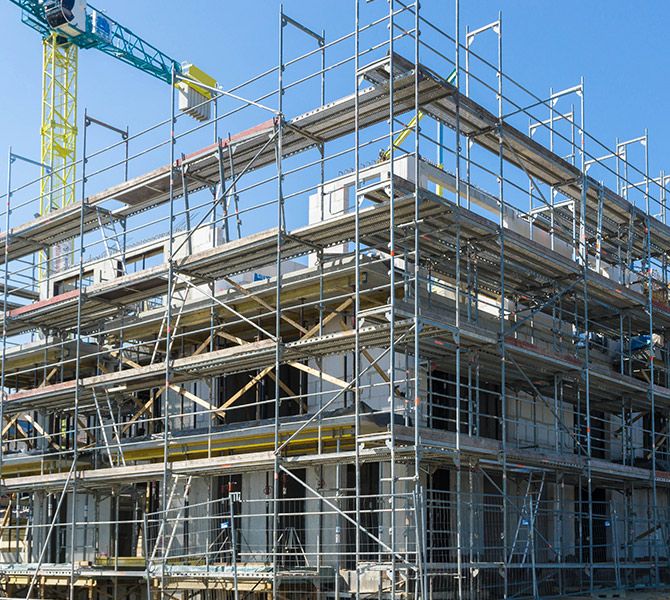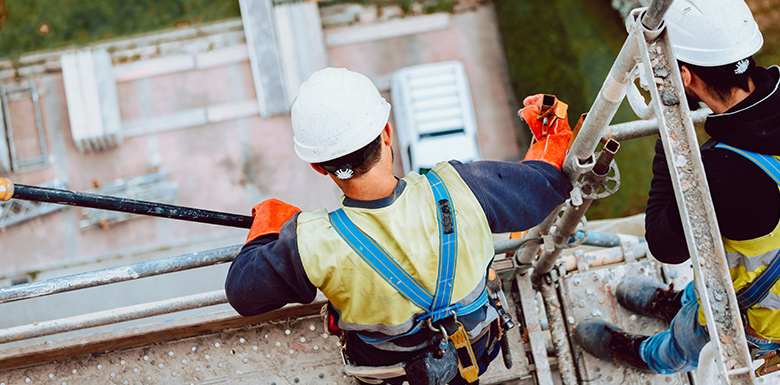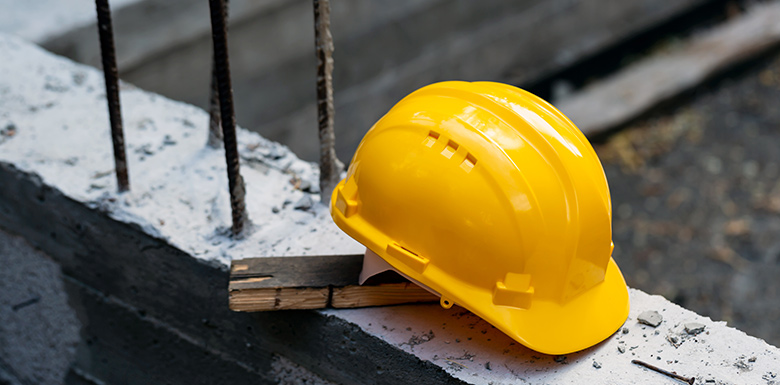Scaffold Accidents in New York City
Scaffold accidents are a significant concern in New York City, where the construction boom and dense urban environment put both workers and pedestrians at risk. Despite scaffolding regulations from OSHA and New York Labor Law 240 (“Scaffold Law“), scaffolding-related violations remain among the most frequently cited safety issues. Improper assembly, missing safety equipment, and overloaded scaffolds contribute to injuries and fatalities that could have been prevented.
Statistics highlight the severity of these risks. Falls are the leading cause of construction worker fatalities in NYC, many of which involve scaffolding. OSHA data reveals that scaffolding violations rank in the top three most cited nationwide, and in NYC, non-workers such as pedestrians and motorists are frequently injured by falling debris or scaffold collapses. These incidents underscore the importance of strict safety measures and enforcement.
Under New York law, property owners and general contractors are responsible for ensuring scaffolding is safe, properly maintained, and equipped with necessary protections like guardrails and harnesses. If you’ve been injured, consulting an experienced scaffold accident lawyer NYC is essential to holding negligent parties accountable and seeking the compensation you deserve.
Federal Statutes and New York Scaffold Law
Federal and state laws provide significant protections for workers injured in scaffolding accidents. OSHA establishes nationwide scaffolding safety standards, focusing on:
- Proper assembly, installation, and disassembly of scaffolding.
- Load capacity and material quality to prevent collapses.
- Training to identify and mitigate fall hazards.
- Safety precautions, including fall protection and safeguards against falling objects.
In addition, New York Labor Law 240 (“Scaffold Law”) imposes strict liability on property owners and contractors for gravity-related injuries. Key provisions include:
- Strict Liability: Owners and contractors are fully responsible for ensuring scaffolds and safety equipment meet legal standards, regardless of worker actions.
- Rigorous Safety Measures: Mandates proper scaffolding installation, safety harnesses, and guardrails.
- Broader Legal Protections: Injured workers may pursue compensation beyond workers’ compensation, covering full damages for medical expenses, lost wages, and pain and suffering.
Common NYC Scaffolding Accidents
Despite strict safety regulations, scaffolding accidents continue to happen at alarming rates in New York City. These incidents often result from unsafe conditions, negligence, or inadequate safety measures. Below are some of the most common types of scaffolding accidents and how they occur:
Falls Due to Missing Guardrails or Improper Equipment
Workers can lose their balance and fall from scaffolds when guardrails are absent, improperly installed, or fail under pressure. Similarly, a lack of proper fall protection equipment, such as harnesses or secure platforms, increases the risk of workers falling from significant heights, leading to severe injuries or fatalities.
Scaffold Collapses from Defective Parts or Overloads
Scaffolds that are poorly constructed or contain defective components, such as weakened planks or unstable supports, are prone to collapse. Overloading scaffolds beyond their designed weight capacity can also cause catastrophic structural failures, endangering both workers on the platform and those below.
Injuries from Falling Tools or Materials
Workers often use tools, equipment, and materials on scaffolding, which can fall if not properly secured. Falling objects pose a significant hazard to individuals working below or to pedestrians passing by construction sites, potentially causing head injuries, fractures, or other serious harm.
Electric Shocks from Faulty Scaffolding
Many scaffolds are equipped with power systems for tools, lighting, or lifts. Faulty electrical wiring, exposed conductors, or damaged components can cause workers to suffer electric shocks or burns, with some cases leading to cardiac arrest or life-threatening injuries.
Slips & Trips from Environmental Conditions
Scaffolds exposed to the elements are especially hazardous during rain, snow, or icy conditions. Wet or slippery surfaces, combined with poor housekeeping, such as leaving tools or debris on the scaffold, create tripping hazards that can result in dangerous falls or other accidents.
Proper safety measures, regular inspections, and adherence to standards often prevent scaffolding accidents. Unfortunately, when negligence or oversight occurs, workers and bystanders are left vulnerable to life-changing injuries.
Common Scaffold Accident Injuries
As you might imagine, Scaffold accidents often result in severe injuries that can significantly impact workers and their families. These injuries create physical challenges and lead to emotional and financial hardships. Below are the most frequently seen injuries in scaffold-related accidents:
- Traumatic Brain Injuries (TBI): Falls or impacts to the head during scaffold accidents can result in TBIs, ranging from mild concussions to severe brain damage. These injuries may cause memory loss, cognitive impairment, and permanent disabilities. For example, a worker falling from an improperly secured scaffold could face lifelong neurological challenges, preventing a return to work.
- Spinal Cord Injuries & Paralysis: Falling from scaffolds can lead to spinal cord trauma, resulting in partial or complete paralysis. A worker landing on their back from a collapsed scaffold may sustain paraplegia or quadriplegia, requiring expensive medical treatments, rehabilitation, and home modifications.
- Broken Bones & Fractures: The force of falling from significant heights or being struck by collapsing scaffolds frequently causes fractures. These injuries can range from minor fractures to severe breaks that require surgery and prolonged recovery. For instance, a construction worker falling from a defective scaffold might sustain broken legs, arms, or ribs, limiting their ability to work.
- Soft Tissue Damage: Torn ligaments, tendons, and muscles are common in scaffold accidents and often result in chronic pain or reduced range of motion. For example, a worker slipping on a wet scaffold could suffer severe sprains or torn rotator cuffs, requiring extended physical therapy.
- Permanent Disability or Disfigurement: Scaffold accidents can lead to amputations, severe scarring, or other life-altering disabilities. For instance, a worker injured in a scaffolding collapse may lose the use of a limb or require reconstructive surgeries, permanently affecting their quality of life.
- Crushing Injuries: Collapsing scaffolds or falling materials can cause devastating crushing injuries, leading to crushed bones, organ damage, or fatalities. For example, a worker trapped under a collapsing scaffold may sustain life-threatening internal injuries, requiring extensive medical care and potentially resulting in permanent disability.
Fatal Scaffolding Accidents in New York City
If your parent, spouse, or child was killed in a scaffolding accident, you should contact Hecht, Kleeger & Damashek, P.C. right away. You may be entitled to additional compensation. Surviving spouses and minor children may receive weekly cash benefits and funeral expenses.
More importantly, a skilled scaffold accident lawyer NYC from our team will analyze the accident to determine if a third party is responsible for their death. If a third party was negligent or reckless and caused the fatal accident, then we can pursue a New York wrongful death claim. We will strive to obtain you compensation for your economic losses, the loss of your relative’s love, and their companionship.
NYC Scaffolding Accident Prevention
Preventing scaffolding accidents requires a combination of proper equipment, safety protocols, and worker awareness. Workers and employers can take the following steps to reduce the risk of injuries on scaffolds:
- Use Personal Protective Equipment (PPE): Workers should always wear helmets, non-slip boots, and safety harnesses when working on scaffolds. These protective measures can prevent or reduce the severity of injuries in the event of a fall or other accidents.
- Ensure Proper Assembly & Inspection: Scaffolding should be assembled and inspected by qualified personnel to ensure structural stability. Regular inspections can identify issues such as loose planks, damaged components, or improper bracing before they lead to accidents.
- Adhere to Load Limits: Overloading scaffolds can cause collapses, endangering workers. Employers and workers must ensure that scaffolds are used within their designated weight capacities and that materials are properly stored to maintain balance and stability.
- Provide Safety Training: Regular training programs should educate workers on scaffold safety, hazard recognition, and proper use of fall protection systems. Supervisors must also enforce compliance with these protocols to maintain a safe work environment.
- Be Aware of Environmental Conditions: Workers should account for environmental factors such as rain, snow, or ice, which can create slippery surfaces and increase the risk of falls. Employers should implement measures like anti-slip coatings or delays in work during hazardous weather conditions.
Tell Us What Happened
"*" indicates required fields



